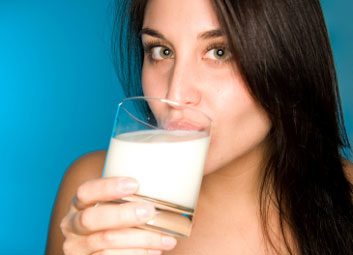
Your food prescription
A mug of milk and strong bones go hand in hand. But dairy products aren’t the skeleton’s only pals. To stay strong, bones need other minerals, vitamins, and proteins as well – all of which the right diet can provide in ample amounts.
Our bones are living tissue, constantly breaking down and rebuilding. By about age 30, however, the breakdown of bone outpaces its building, and our bones lose density, particularly a spongy-looking interior structure called trabecular bone that gives bones strength. Over time, bones may become excessively fragile, resulting in fractures related to osteoporosis. Women’s risk of the disease is four times higher than men’s, in part because they have less bone mass to begin with. Menopausal women lose bone two to four times faster than they did before menopause, the result of a decline in bone-protecting estrogen. That rate slows down eventually, but the decline continues.
Diet won’t rev up bone replacement, but along with regular exercise, it can help us hold on to the precious bone we have.
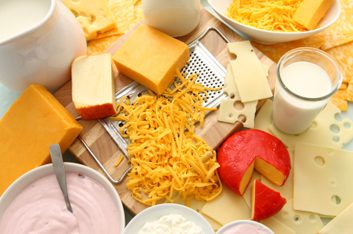
Dairy products (and other foods high in calcium)
Our bodies contain one to two kilograms (2 to 4 pounds) of calcium, 99 percent of it in our teeth and bones. Calcium, along with other minerals, hardens the protein fibers that make up our bones. Eating foods high in calcium – dairy foods, bony sardines and salmon, leafy greens like spinach and dried beans – may help minimize the inevitable bone loss that comes with aging. For one thing, keeping calcium levels up lowers the amount of calcium our bodies have to borrow from bones to accommodate other essential functions like blood clotting, nerve transmission and muscle contraction.
Don’t worry if you’re lactose intolerant, a condition that makes it hard to digest dairy products. Bulk up instead on other calcium-rich foods. Orange juice with added calcium is another good source, and so are lactose-free milk and yogurt.
Aim for: 1,000 to 1,200 milligrams of calcium daily, the equivalent of eating the following foods in the course of a day: a cup (250 millilitres) of low-fat yogurt, a glass of skim milk, and a serving each of spinach and canned salmon. Spread your calcium intake throughout the day in amounts of 500 milligrams or less for the best use of the calcium you consume.
Helpful hint: While spinach and chard contain a lot of calcium, they also contain calcium oxalate, a salt that makes the calcium less available to your body. Pair them with foods rich in vitamin C so your body can absorb more of the calcium.
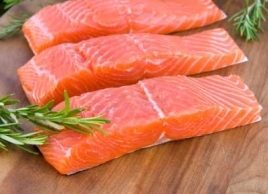
Salmon, sardines (and other foods high in vitamin D)
Without vitamin D, our bodies absorb only 10 to 15 percent of the calcium we take in. When calcium levels drop, vitamin D activates to help our bodies absorb more calcium and reduce the amount we excrete.
Many people don’t get enough D, especially if they spend less than 10 or 15 minutes a day in the sun without sunscreen. (Sunlight triggers D production in our skin.) But one serving of salmon is all you need for a daily dose.
Aim for: 400 to 800 IU of vitamin D per day; 90 grams (3 ounces) of salmon has 425 IU, and a glass of fortified milk or OJ has 100 IU.
Helpful hint: Fluid milk and some orange juices are fortified with vitamin D.
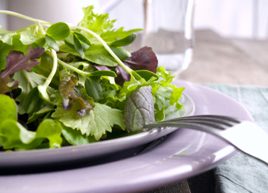
Dark green leafy vegetables (and other foods high in vitamin K)
Vitamin K, found mostly in green leafy vegetables like kale, spinach, and beet greens, may be important for bone formation. Some studies have found that people who have high levels of K have lower risk of hip fracture, higher bone density, and less loss of calcium in urine. That’s because vitamin K activates a bone protein that secures calcium within the bone.
Aim for: 90 to 120 micrograms of vitamin K daily, about the amount in 2 tablespoons (25 millilitres) of chopped parsley and a quarter of the amount in 1/2 cup (125 millilitres) of spinach.
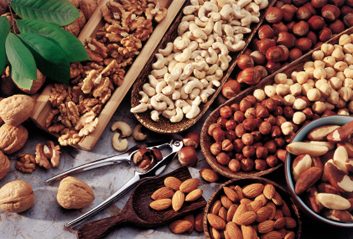
Fruits, vegetables, beans and nuts
Studies at Tufts University in Boston have shown that people who eat plenty of fruits and vegetables – most of which are rich in potassium and magnesium – have far less bone loss than those who have lower intakes of these foods. The reason: When the body has an excess of acid – usually the result of eating meat and other animal protein – the body depends on fruits and vegetables full of potassium and magnesium to neutralize it. Without those nutrients, the body borrows calcium from our bones to do so.
Fruits and vegetables high in potassium, like bananas and tomatoes, also protect bones by counteracting calcium loss caused by high-salt diets. In a University of California study, when 60 women were given a high-salt diet, their calcium loss increased by 42 milligrams a day. But when they added potassium, calcium loss decreased to 8 milligrams. Studies have also shown that if you consume adequate amounts of calcium, you can be less concerned about your salt intake.
Leafy greens, beans, nuts, and whole grains have hefty doses of magnesium, essential for bone strength; 50 percent of your body’s magnesium supply lies within your skeleton.
Aim for: Potassium: 4,700 milligrams daily. Avocados, bananas, oranges, and tomatoes are just a few of the fruits and vegetables that offer 300 milligrams per serving. Magnesium: 310 to 420 milligrams daily. Enjoy a cup (250 millilitres) of cooked oatmeal for breakfast, a handful (1/4 cup/50 millilitres) of almonds as an afternoon snack, a 125-gram (4-ounce) serving of salmon, and a half cup (125 millilitres) of sautéed spinach for dinner, and you’re all set.
Helpful hint: Eat fresh fruits and vegetables whenever possible instead of canned. Canning destroys potassium.
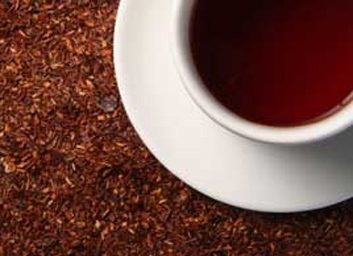
Black tea
It turns out that a nice cup of tea isn’t as meek as it sounds. In a Chinese study of more than 1,000 people, tea drinkers having an average of three to four cups a day for 10 years or more had 0.5 to 5 percent higher bone density than non-tea drinkers, a big difference when it comes to bones. It turns out that tea contains several compounds, including fluoride and tannins, that may benefit bone. So fire up the kettle!
Aim for: Three to four cups a day.
Helpful hint: Add some milk to each cup, and you’ll boost bone-building calcium as well.
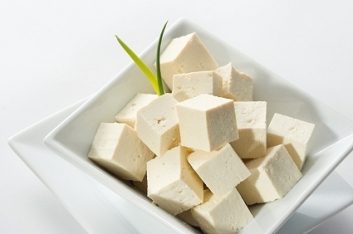
Soy, fish, chicken (and other foods high in protein)
Several studies have found that people who eat diets moderately rich in protein and take calcium/vitamin D supplements lose less bone density over three years than those with low-protein diets who don’t take supplements. The tricky thing is that too much protein – more than 30 percent of daily calories – weakens bones, particularly if calcium intake is low.
Try to get some of your protein from soy (tofu, edamame, and soy milk). Soy is a rare alkaline protein, which helps lower acid content in the blood – a good thing for your bones. Research also shows that protein from soy foods helps reduce bone loss in menopausal women.
Aim for: About 20 percent of your daily calories should come from protein.
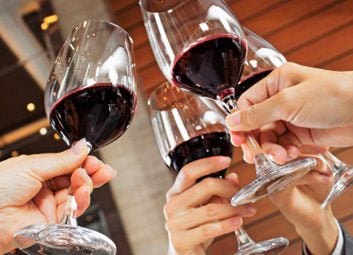
Off the menu
Piles of protein.
When protein exceeds 30 percent of calories a day, it can hurt your bones, although the type of protein also matters. Sulfur in animal proteins increases the acid content of blood, and without enough alkaline fruits and vegetables, the body rebalances itself by borrowing calcium from bones.
Salty foods.
Too much salt pulls calcium out of bones. In fact, according to one study, women on a month-long high-salt (9 grams a day) diet lost 42 milligrams more calcium than they did on a low-salt (2 grams a day) diet. Cut back on naturally salty foods like anchovies as well as processed foods, which are often loaded with salt. Eat lots of potassium-rich foods like bananas, which help offset salt’s calcium-leaching effect, and eat plenty of high-calcium foods to replace what’s lost. The Institute of Medicine recommends no more than 3.8 grams of salt daily.
Too much alcohol.
Drinking to excess undermines bone health. For one thing, too much alcohol can interfere with the body’s use of calcium and vitamin D. And it boosts the excretion of magnesium, a mineral essential for bone strength. In men, excess alcohol also lowers testosterone, which can interfere with bone building. In women, frequent overindulgence may lead to irregular menstrual cycles, which raises osteoporosis risk.
Still, you don’t always have to skip the wine-and-cheese party. Several studies have found that moderate drinking may give bone density a boost. In small amounts, alcohol helps convert testosterone (which women have, too) into estradiol, a form of estrogen that helps prevent bone loss.
Caffeine.
You may want to pass on that third or fourth cup of Joe. A Swedish study of more than 31,000 women ages 40 to 76 found that four or more cups of coffee daily increased the risk of bone fractures, particularly in women who took in too little calcium. Yet another study found that more than three cups of coffee a day increased the risk of osteoporosis in both men and women by 82 percent. The reason: Caffeine increases the amount of calcium we lose in urine, and it may also interfere with the absorption of calcium and vitamin D. If you can’t give up caffeine, get enough calcium and vitamin D from foods to counteract any losses.
Related:
• Osteoporosis
• 5 myths about osteoporosis
• How exercise improves bone health
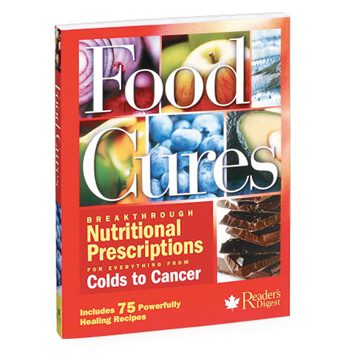
More Food Cures
Here is your definitive guide to help heal, ease or prevent 57 ailments with common foods and nutritional supplements. Settle nausea with ginger. Give your memory a boost with oatmeal. Lower your blood pressure with bananas. You’ll find dozens of detailed food “prescriptions” to help treat everything from allergies to migraines to ulcers and more. Plus, you’ll be amazed at how many favourite foods are on the menu: beer, red wine, dark chocolate, shrimp, guacamole, peanut butter…That’s because healing yourself with food is not about eating less, it’s about eating more. And with 75 delectable recipes, eating for health has never been more delicious!
Get it now in the Best Health Store >>
